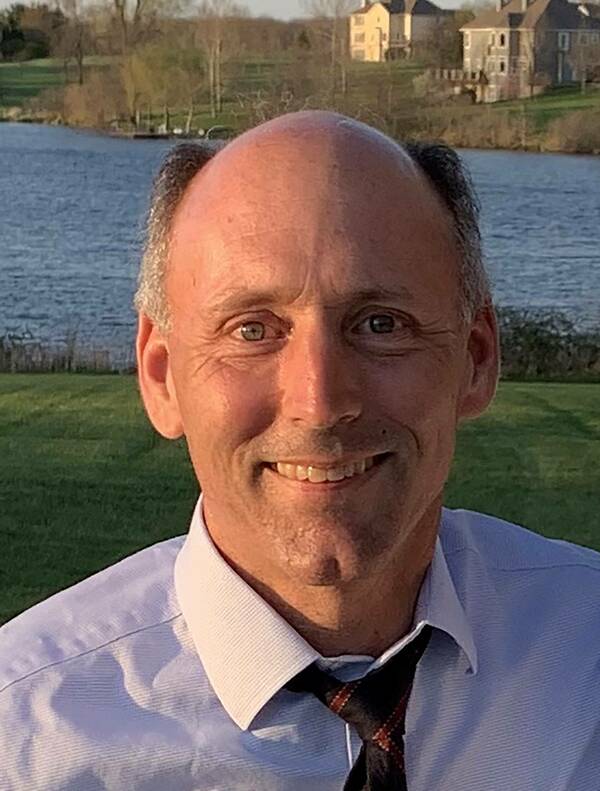Paul Kulesa ’84, Berthiaume Family Professor in Neuroscience and Behavior, recognizes the importance of tackling scientific questions from multiple perspectives.

When he learned that the College of Science sought a multidisciplinary approach to the study of biology, the Notre Dame College of Engineering graduate was enticed to return to his alma mater and use his background in engineering and mathematics to better understand the biological processes surrounding pattern formation.
“I established my research program not from the viewpoint that mathematics is the theoretical basis for everything, but that the biology can really drive our thinking about how to apply the mathematics towards a better understanding of the biology,” Kulesa said.
Kulesa’s research led him to study neural crest cells, a migratory cell population in developing embryos that contributes to the formation of a wide range of tissues. His research group was the first to visualize this cell population on the move, while still keeping the chicken embryo in the egg. This work helped answer pressing questions about neural crest cells and opened avenues for further research.
Kulesa, who had declined no less than eight offers from other top research institutions, decided to further his research career at the University of Notre Dame because it is unique in interweaving faith and science.
“I wanted to find a place where I could be a Catholic scientist,” he said.
Santiago Schnell, the William K. Warren Foundation Dean of the College of Science, who had worked with Kulesa in the past and was familiar with his scientific reputation, recruited Kulesa to come to Notre Dame to lend his expertise to positively impact neuroscience research and education at Notre Dame.
“His work intersects computational applied mathematics, biology, and imaging, and he is an expert in his field,” Schnell said. “His skills and experiences on a wide range of problems, plus his desire to work collaboratively across fields, makes him an excellent addition to neuroscience research and teaching in the College of Science.”
One area where Kulesa’s work can make a difference is in the study of cancer. Melanoma and neuroblastoma, two of the most aggressive cancers, arise from the neural crest, so Kulesa began to investigate how his research could be used in cancer treatment.
Kulesa’s research has made strides in understanding the normal development of the sympathetic nervous system, which connects the internal organs to the brain and is the generator of the fight-or-flight response. He has shown how mistakes in the development of this division of the nervous system can give rise to neuroblastoma, a type of cancer that most often affects children ages 5 and younger because it forms in immature nerve cells. This form of pediatric cancer represents about 50% of the cancers in infants from zero to two years old.
Treating neuroblastoma with radiation or chemotherapy can have devastating effects on a developing nervous system. Kulesa’s research will help better predict the course of the neuroblastoma’s development, and provide clinicians with more personalized and precise treatment strategies that improve quality of life and promote infant survival.
“We combine computational modeling, imaging, and experimental biology to try to understand how neural crest cells get from one place to another in the embryo with the long term goal of better understanding birth defects and neural crest derived cancers,” Kulesa explained.
Prior to working at the University of Notre Dame, Kulesa was recruited to the Stowers Institute for Medical Research to serve as the Founding Director of Imaging. While this opportunity provided Kulesa and his colleagues with the resources and flexibility to catalyze discoveries that are transforming our understanding of human health and disease, there was something missing for him.
“I wanted to find a place where I could give back and train the next generation of multidisciplinary scientists,” Kulesa said.
Professor Kulesa has been appointed as the Berthiaume Family Professor of Neuroscience, and he is grateful for the opportunity and the support of the Berthiaume Family.
“Without the kindness and generosity of Mr. and Mrs. Berthiaume and their family, our shared vision of strengthening neuroscience research and education and building a state-of-the-art imaging center would not be possible. I look forward in the coming years to sharing with them the wonderful discoveries of students and faculty, and I am inspired by their commitment to Notre Dame,” Kulesa said.
In addition to his appointment as the Berthiaume Family Professor of Neuroscience, Kulesa has been appointed co-director of Notre Dame’s Neuroscience and Behavior Program. Established in 2014 as a collaboration between the College of Science and the College of Arts and Letters, the Neuroscience and Behavior undergraduate major has attracted unprecedented student interest. The major accounts for 25% of students in the College of Science and is the fastest-growing major at the University. Kulesa looks forward to working with Professor Nancy Michael, director of Undergraduate Studies for the Neuroscience and Behavior major, and Professor Brad Gibson, co-director of the Neuroscience and Behavior program, who have been instrumental in developing the program, to continue building an internationally-recognized, forward-looking neuroscience program, and he plans to develop a Notre Dame Neuroscience HUB and state-of-the-art imaging capabilities.
“It’s wonderful to come back to Notre Dame in this capacity to really help to drive a newly created neuroscience program and to raise the research level of imaging and neuroscience here,” he said.
Kulesa’s advice for fellow scientists or aspiring researchers is to follow what interests you and not be afraid to approach complex questions.
“Go to places that you have a curiosity about, because that'll drive you to be in the lab at midnight, and to make new discoveries,” he said.
Originally published by at science.nd.edu on March 06, 2023.